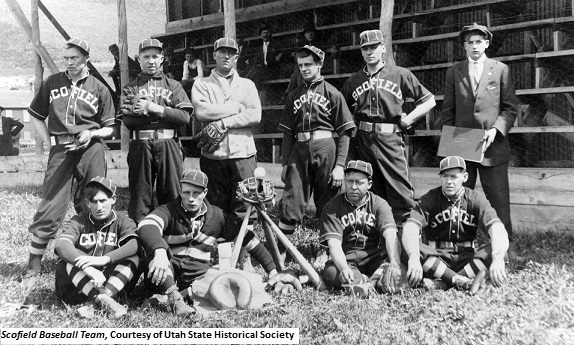Dublin Core
Title
Description
The all-American game of baseball helped new immigrants adjust to life in Utah during the early 1900s.
During the early 1900s, the United States came into its own as an industrialized nation. Attracted by jobs and the chance to move up in society, immigrants left the Old World for a chance in the New. They came from Italy, Greece, and Eastern Europe, from far-away places with foreign-sounding names. Lured West by headhunters and labor recruiters, many of them came to work in Utah’s railroad and mining industries. As historian Philip Notarianni observes, Carbon County was Utah’s Ellis Island. The U.S. Census of 1920 reflects the county’s growing diversity, with Italians, Greeks, Japanese, and Mexicans all making homes there.
Not unlike today, government leaders feared the influx of immigrants. In March 1919, the Utah Legislature passed the Americanization bill. The new law required immigrants to attend classes on how to be American. At the time, baseball seemed to characterize everything American, and nearly every town had a team. Carbon County was no different. The sport was one social outlet that allowed immigrants to retain their distinctive ethnic identities while living and working in a new country.
By 1898 Price, Helper, and Castle Gate created Carbon County’s first baseball league. Games were played in Price on a vacant lot near the depot and First West. A strong rivalry formed among Price, Helper, and Castle Gate. Sometimes the games took a dangerous turn. In a contest between Mohrland and Castle Gate, Gerald Wesley was hit in the head by a baseball. He insisted on staying in the game until he collapsed in the sixth inning. He died later that night. His teammates remembered him by wearing black arm bands.
For Carbon County, as well as all the other Ellis Islands across the United States, baseball helped new immigrants adapt to American culture without abandoning the Old Country.
Creator
Source
Image: Scofield Baseball Team. Baseball helped new immigrants adapt to America without abandoning their home cultures. Courtesy of Utah State Historical Society.
_______________
See Philip F. Notarianni, “Utah’s Ellis Island: The Difficult ‘Americanization’ of Carbon County” in A World We Thought We Knew: Readings in Utah History edited by John S. McCormick and John R. Sillito (Salt Lake City: The University of Utah Press, 1995), 217, 218., 223; George Eisen, “Introduction,” and “Jews and Baseball” in Ethnicity and Sport in North American History and Culture edited by George Eisen and David K. Wiggins (Westport, Connecticut and London: Greenwood Press, 1994), xi, 77; Ronald G. Watt, A History of Carbon County (Salt Lake City: Utah State Historical Society, 1997), 331; Carbon County News “Castle Gate vs. Price” April 29, 1910 p. 1; Carbon County News “Information and Opinions” May 23, 1912, p. 5; Carbon County News “Subscription and Clearances of the Helper Baseball Team, 1910, March 31, 1911 p. 8; Carbon County News “G.A. Wesley” May 28, 1915, p. 1.

